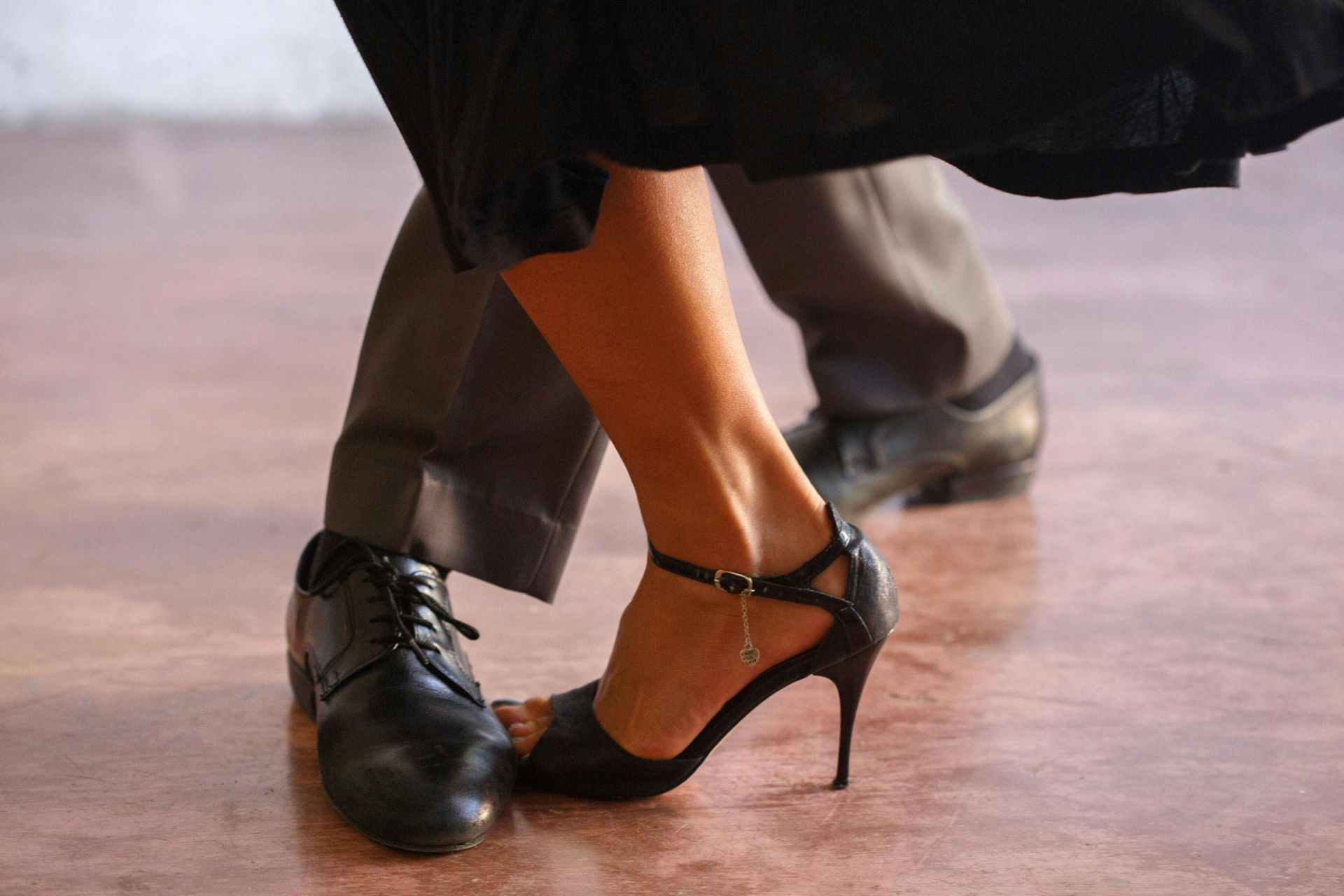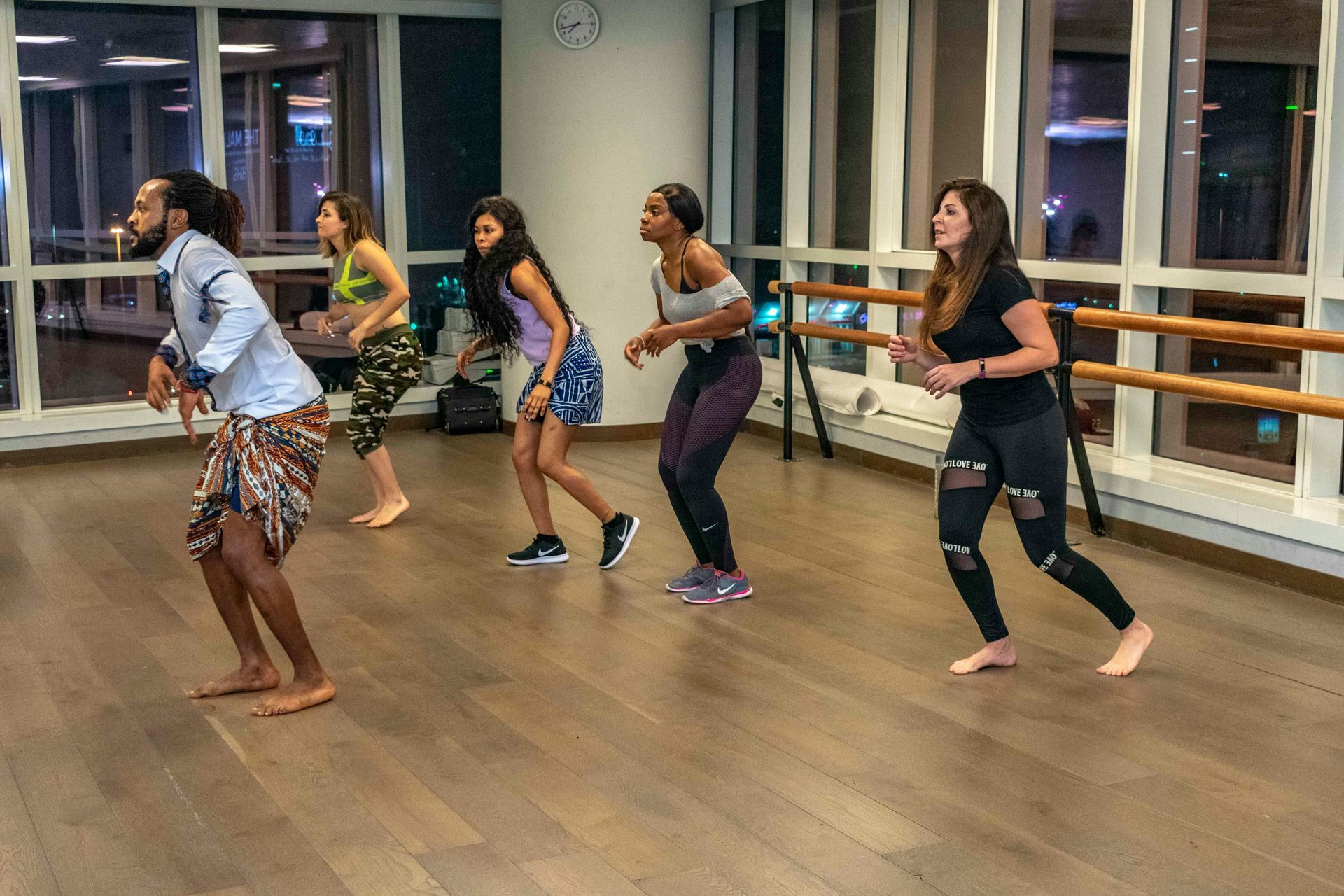How Social Dance Parties Help Improve Your Confidence and Rhythm
Social dance parties offer an engaging way to connect with others while fostering personal growth through dance. These events bring people together to move to music in casual settings like community halls, dance studios, or outdoor venues. Whether you're new to dancing or have some experience, attending social dance parties can lead to remarkable changes in how you feel about yourself and how you move.
This article explores the benefits of social dancing, including how it helps build confidence and improve rhythm. We'll examine practical ways these gatherings support self-improvement, with insights into how social dance parties improve self-confidence and how dancing serves as a way to build rhythm and coordination. Many participants report feeling more at ease in social situations after attending regularly, often discovering new aspects of their personality along the way.
Key Takeaways
- Social dance parties provide a low-pressure environment to practice social skills, which can enhance overall self-assurance and help you feel more comfortable in group settings.
- Regular participation in dancing helps refine timing and coordination, leading to better rhythm over time and improved body awareness.
- Interacting with partners and groups at these events fosters meaningful connections that reduce feelings of isolation and build lasting friendships.
- The physical activity involved releases endorphins, contributing to a positive mood, reduced stress levels, and improved overall mental health.
- Learning new steps challenges the brain, promoting mental agility alongside physical improvements and keeping your mind sharp.
- Joining these gatherings exposes you to diverse music and dance styles, broadening cultural awareness and appreciation for different traditions.
Understanding Social Dance Parties
Social dance parties are informal gatherings where people come together to dance in pairs or groups, typically without strict rules or competitive pressure. Unlike formal dance classes, these events prioritize enjoyment and social connection. Common styles include salsa, swing, tango, and ballroom, though many parties mix genres to keep the atmosphere lively.
The appeal lies in the social aspect. You arrive, find a partner or join a group, and start moving. No prior expertise is required, though beginners might feel nervous initially. Over time, repetitive practice in a supportive environment builds familiarity and comfort. Many organizers offer short beginner lessons at the start to ensure everyone feels prepared. This inclusivity makes social dance parties accessible for all ages, body types, and fitness levels.
How Dancing Builds Confidence
Dancing in a group setting gently pushes you beyond your comfort zone. At social dance parties, you interact with strangers, asking for dances or leading and following steps. This repeated practice reduces hesitation in everyday social scenarios.
Group dancing helps overcome shyness by starting small. Joining a circle or line dance allows you to blend in without immediate spotlight. As you progress, partnering up becomes less intimidating. Successfully executing moves boosts your sense of capability, which carries over to other areas like public speaking or interviews.
Social dance parties improve self-confidence through positive feedback loops. When a partner smiles or compliments your effort, it reinforces your abilities. These interactions accumulate over time, helping you view yourself more favorably. Dance also encourages upright posture and open body language, which can influence mood and self-perception. The act of learning builds "self-efficacy," or the belief in your ability to succeed.
Solo Dancing vs. Social Dancing: A Comparison
| Aspect | Solo Dancing | Social Dancing at Parties |
|---|---|---|
| Interaction Level | Minimal, self-focused | High, with partners or groups |
| Feedback Source | Internal reflection | External compliments and smiles |
| Challenge Type | Personal Technique | Adaptability to others' styles |
| Outcome on Shyness | Gradual self-acceptance | Direct overcoming of social barriers |
| Long-term Benefit | Improved self-discipline | Enhanced interpersonal skills |
This comparison illustrates why social settings often amplify confidence gains compared to dancing alone.
Improve Rhythm Through Dance
Rhythm is the heartbeat of dance, and social parties provide abundant opportunities to develop it. Moving to beats requires active listening and syncing your body to music, which strengthens timing skills. Dancing as a way to build rhythm and coordination involves repetitive patterns that train muscle memory, gradually making rhythmic movement feel natural.
In a party atmosphere, varied music tempos challenge you to adapt quickly. Salsa might demand fast footwork, while waltz calls for smoother flows. This variety prevents monotony and accelerates learning by exposing you to different rhythmic structures. Over time, you'll likely notice improved coordination in daily activities—from sports to simply walking with more grace.
Best Dances to Improve Rhythm and Timing
Different dance styles offer unique benefits for developing rhythm:
- Salsa: Emphasizes quick steps and hip movements, teaching syncopation and complex timing patterns that challenge your ability to count beats.
- Swing: Focuses on bouncy, upbeat rhythms, improving your sense of swing timing and the ability to play with musical accents.
- Tango: Builds precision through close holds and deliberate pauses, teaching you to find rhythm in stillness as well as movement.
- Hip-hop social styles: Encourage freestyle movement to beats, enhancing improvisation skills and personal expression within rhythmic frameworks.
- Line dances: Group formats that reinforce collective rhythm without requiring partners, perfect for building confidence in rhythmic patterns.
Practicing these styles at social events allows for real-time adjustments based on the crowd's energy and the music selection, making each experience unique and educational.
Coordination benefits are particularly pronounced when dancing with partners. Leading or following requires anticipating moves and responding to subtle cues, which sharpens spatial awareness and nonverbal communication skills. Many dancers report feeling more in tune with their bodies and more aware of how they move through space after consistent exposure to social dancing.
Benefits of Social Dancing
Beyond building confidence and improving rhythm, social dancing offers comprehensive advantages across multiple dimensions of well-being:
- Physical Health: Social dancing provides moderate aerobic exercise that improves cardiovascular health, flexibility, balance, and stamina. Unlike some forms of exercise that can feel monotonous, social dancing keeps you engaged through changing music and social interaction, making it easier to maintain as a regular fitness habit.
- Mental Clarity: The focus required to remember steps and stay in sync serves as an effective mindfulness practice that clears the mind of daily worries and provides a mental break from stress. The cognitive challenge of learning choreography also helps maintain brain health and may even support memory function as we age.
- Social Connection: These parties build genuine community, with regular attendees often forming close bonds and friendship networks that extend beyond the dance floor. This sense of belonging can alleviate loneliness, particularly in urban areas where meaningful connections might otherwise be difficult to establish.
- Cultural Exposure: The benefits of joining social dance events extend to cultural education. Dances from various origins introduce you to new traditions, music, and ways of moving. Learning bachata, for instance, might spark curiosity about Latin American history and music traditions, fostering empathy and cultural openness.
- Emotional Well-being: The joy of movement triggers the release of endorphins and other feel-good neurotransmitters. Participants often leave events feeling energized, with a more positive outlook that can last for days. This natural mood boost can help manage mild anxiety, stress, or low moods without medication.
- Personal Growth: Overcoming the initial awkwardness of social dancing teaches valuable resilience and adaptability. Each party becomes a mini milestone, offering tangible evidence of your progress in both skills and social ease, building confidence that transfers to other life challenges.
Overcoming Challenges in Social Dance Settings
Not everyone arrives at their first social dance party feeling naturally poised or confident, and that's completely normal and to be expected. How to gain confidence in social dance settings begins with thoughtful preparation and self-compassion. Consider attending beginner-friendly events or taking introductory classes beforehand to familiarize yourself with basic steps and etiquette.
Common hurdles include fear of making mistakes, worry about being judged, or anxiety about asking someone to dance or being asked. It's helpful to remember that most people are there to have fun and improve their own skills, not to critique others. Start by observing from the sidelines if needed, then gradually join simpler dances or group activities before moving to partner dancing.
Can dancing help with stage fright? For many people, yes. Social dancing simulates performance in a relatively low-stakes environment. The gradual exposure to being seen while moving can desensitize performance-related nerves over time, building comfort with being in the spotlight.
Practical Tips for Success
- Wear comfortable clothes and shoes that allow you to move freely and feel physically at ease, reducing one source of self-consciousness.
- Smile and make eye contact to signal openness and invite positive interactions with potential dance partners.
- Practice basic steps at home using online tutorials or videos to build a foundation of confidence before arriving.
- Attend with a friend initially for moral support and to have a familiar face in the crowd while you adjust.
- Focus on enjoyment rather than flawlessness—remember that mistakes are part of learning and often lead to laughter and connection.
- Arrive early to social events when crowds are smaller and the atmosphere may feel less overwhelming.
- Take breaks when needed to process new information, rest, or simply observe and enjoy the music.
With persistence and patience, these settings transform from sources of anxiety into empowering experiences that highlight your growth and capability.
Frequently Asked Questions
What are the main benefits of social dancing for beginners?
Beginners often gain improved coordination, enhanced social skills, and a fun outlet for stress relief. Social dancing introduces rhythm basics in an enjoyable group format while building confidence and expanding social circles. The non-competitive atmosphere makes it ideal for newcomers, focusing on personal enjoyment rather than comparison with others.
How do social dance parties differ from dance classes?
Dance classes follow a structured curriculum with formal instruction on specific techniques and sequences. Social dance parties emphasize free dancing, social mingling, and applying what you know in a relaxed atmosphere.
Classes build your foundation while parties provide practical experience dancing with various partners, making both complementary for optimal learning.
Can dancing help with stage fright?
Yes, regular group dancing often reduces performance anxiety by providing repeated exposure to being observed while moving. Social dance settings are supportive and non-judgmental, allowing you to build comfort gradually. This experience can translate to reduced anxiety in other performance situations like public speaking or presentations.
What are the best dances to improve rhythm and timing?
Salsa, swing, and tango are particularly effective because they involve varied beats and precise partner synchronization. Salsa teaches complex rhythmic patterns, swing develops bounce and musical accent awareness, and tango builds precision and control. For beginners, line dances and bachata offer more accessible entry points with excellent rhythmic training.
How does group dancing help overcome shyness?
Group dancing creates a structured environment for social interaction that reduces barriers through positive experiences. Dance provides clear protocols and shared activities that make interaction easier than unstructured social situations. As you experience successful dances and friendly interactions, your brain begins associating social situations with positive outcomes, gradually diminishing shyness.
Final Thoughts
Social dance parties serve as a powerful gateway to personal enhancement, seamlessly blending fun with meaningful growth. Through consistent participation, you can experience the profound benefits of social dancing in both confidence and rhythm development. Whether you're exploring how dancing builds confidence or discovering ways to improve rhythm through dance, these events offer practical, accessible paths forward.
The journey doesn't require natural talent or prior experience, just a willingness to step outside your comfort zone and embrace the learning process. Consider exploring a social dance event in your area to experience these effects firsthand. The transformation begins with a single step onto the floor, and from there, the possibilities are endless.
Take your first step with our supportive beginner community—where everyone starts as a newcomer.
Reference:
https://dancingforhealth.org.uk/



